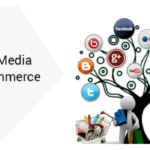Introduction
A. This section introduces the topic of the blog post, which is focused on proven SEO strategies to improve a website’s ranking in search engine results pages (SERPs). It emphasizes the importance of SEO for driving organic traffic and increasing online visibility.
B. The introduction previews the 10 proven SEO strategies that will be discussed in the blog post, setting the stage for what readers can expect to learn.
Strategy 1: Keyword Research and Analysis
A. Keyword research is the process of identifying the specific terms and phrases that users are searching for in search engines. This section explains the importance of keyword research in SEO and how it helps in targeting relevant keywords that can drive traffic to a website.
B. Tips for conducting effective keyword research are provided, including using keyword research tools, analyzing search volume and competition, and identifying long-tail keywords.
C. Additionally, this section covers how to analyze keyword competition and search volume to prioritize keywords that offer the best opportunities for ranking.
Strategy 2: On-Page Optimization
A. On-page optimization involves optimizing various elements on a webpage to improve its visibility and relevance to search engines. This section highlights the importance of optimizing title tags, meta descriptions, and headings for target keywords.
B. Tips are provided for optimizing content for target keywords, such as including keywords naturally in the content, optimizing images with descriptive alt tags, and creating SEO-friendly URLs.
C. Best practices for optimizing images and URLs are discussed to ensure that every aspect of on-page optimization is covered comprehensively.
Strategy 3: High-Quality Content Creation
A. High-quality content is a cornerstone of effective SEO. This section explains why creating informative, engaging, and valuable content is essential for attracting and retaining website visitors.
B. Tips are provided for identifying content topics and formats that resonate with the target audience, including conducting keyword research, analyzing competitor content, and understanding user intent.
C. The section also covers how to optimize content for search intent and user experience, ensuring that content not only ranks well in search engines but also satisfies user needs and preferences.
Strategy 4: Mobile Optimization
A. Mobile optimization refers to the process of ensuring that a website is optimized for viewing and usability on mobile devices. This section explains why mobile optimization is important for SEO, considering that a significant portion of internet users access websites on mobile devices.
B. Tips are provided for optimizing websites for mobile devices, including using responsive design, optimizing page speed, and improving mobile usability.
C. The section also covers how to improve page speed and usability on mobile devices, which are critical factors for both user experience and SEO.
Strategy 5: Link Building
A. Link building is the process of acquiring backlinks from other websites to improve a website’s authority and credibility in the eyes of search engines. This section explains why building high-quality backlinks is essential for SEO success.
B. Tips are provided for acquiring backlinks from reputable websites, including guest blogging, content partnerships, and outreach strategies.
C. The section also covers how to use guest blogging, content partnerships, and outreach to build links, providing readers with actionable strategies for improving their website’s link profile.
Strategy 6: Technical SEO
A. Technical SEO focuses on optimizing various technical aspects of a website to improve its crawlability, indexability, and overall performance in search engines. This section explains why technical SEO is important for website ranking and user experience.
B. Tips are provided for optimizing website structure, navigation, and internal linking to make it easier for search engines to crawl and index content.
C. The section also covers how to improve website performance, crawlability, and indexability, ensuring that technical issues do not hinder a website’s ability to rank well in search results.
Strategy 7: User Experience Optimization
A. User experience optimization involves improving various aspects of a website to enhance user satisfaction and engagement. This section explains why providing a positive user experience is crucial for SEO success.
B. Tips are provided for improving website usability, accessibility, and navigation to make it easier for users to find and interact with content.
C. The section also covers how to reduce bounce rate and increase dwell time through UX optimization, ensuring that users stay on the website longer and engage with more content.
Strategy 8: Local SEO
A. Local SEO focuses on optimizing a website to rank higher in local search results and attract local customers. This section explains why local SEO is important for businesses targeting local audiences.
B. Tips are provided for optimizing Google My Business listing and local citations to improve local search visibility.
C. The section also covers how to leverage customer reviews and local content for local SEO, helping businesses attract more local customers and increase foot traffic to physical locations.
Strategy 9: Schema Markup
A. Schema markup is a form of structured data that helps search engines understand the content on a webpage better. This section explains why implementing schema markup is beneficial for improving search visibility and generating rich snippets in search results.
B. Tips are provided for implementing schema markup to enhance search visibility and improve click-through rates.
C. Examples of schema markup types and their benefits for SEO are provided, helping readers understand how schema markup can be used to improve their website’s ranking and visibility.
Strategy 10: Regular Monitoring and Optimization
A. Regular monitoring and optimization involve tracking website performance and SEO metrics to identify areas for improvement and make data-driven optimizations. This section explains why regular monitoring and optimization are essential for maintaining and improving SEO rankings.
B. Tips are provided for using analytics tools to track keyword rankings, traffic, and conversions, allowing website owners to measure the effectiveness of their SEO efforts.
C. The section also covers how to use data insights to continuously optimize SEO strategies, ensuring that websites remain competitive and continue to attract organic traffic over time.
Conclusion
A. The conclusion summarizes the 10 proven SEO strategies discussed in the blog post, highlighting their importance for improving website ranking and driving organic traffic.
B. Readers are encouraged to implement these strategies to improve their website’s ranking and achieve long-term SEO success.
C. Final thoughts are provided on the significance of ongoing SEO efforts for maintaining and improving website visibility and attracting organic traffic.














